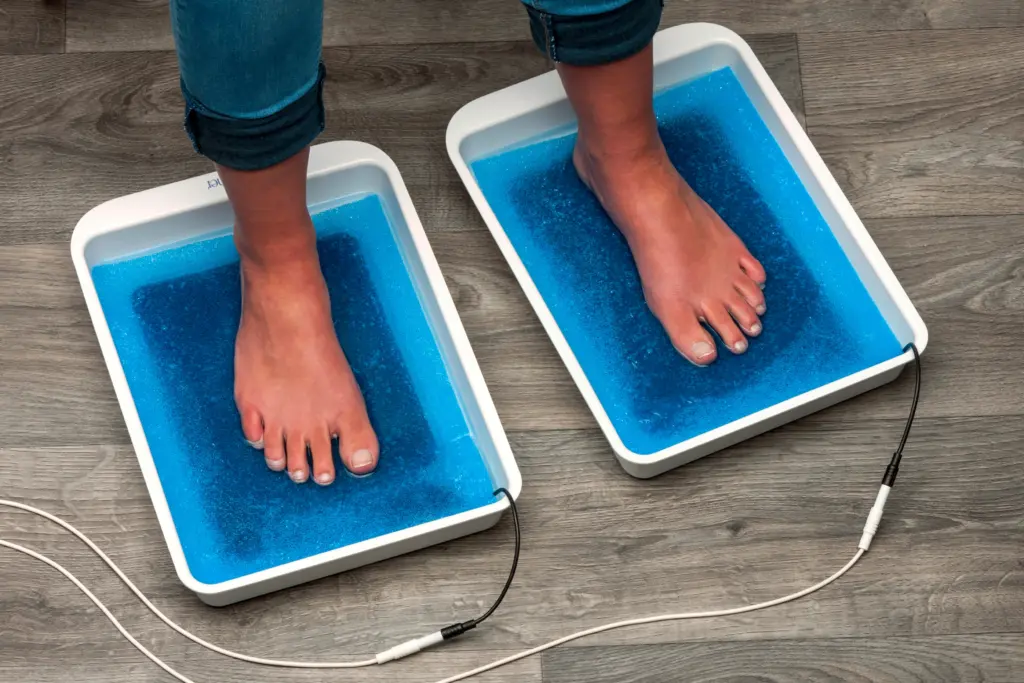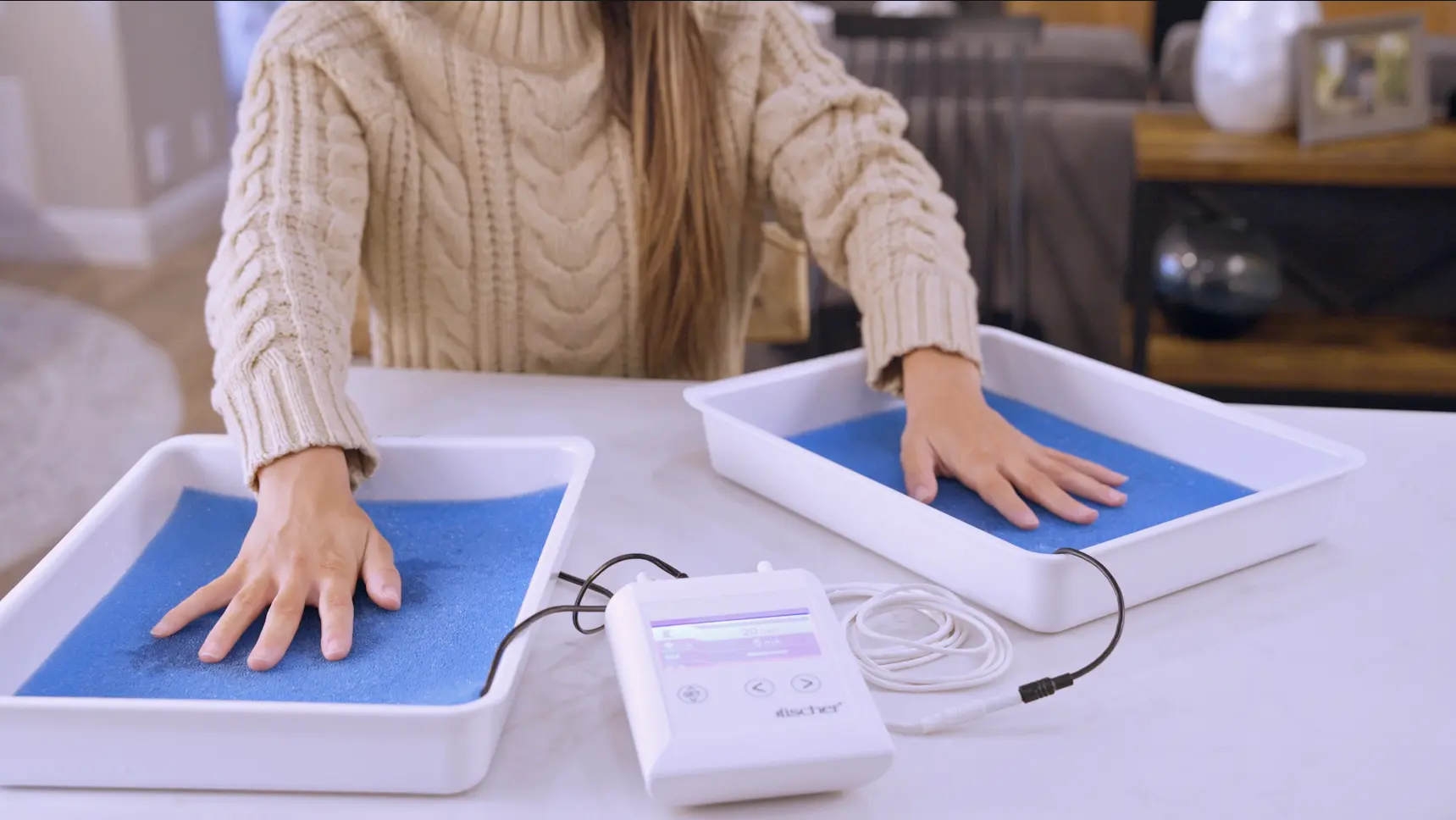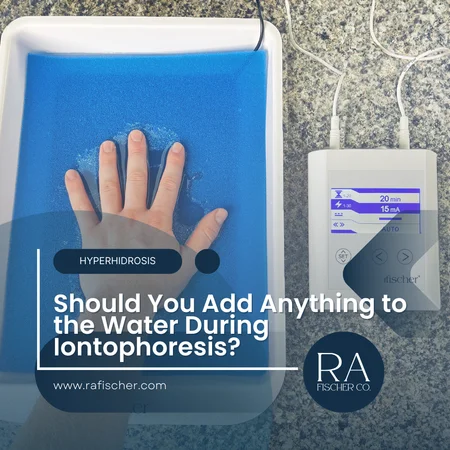March 31, 2020
By
Daniel Moyer
Should You Add Anything To The Water During Iontophoresis?
Iontophoresis, a proven treatment for hyperhidrosis,uses mild electrical currents and the minerals in tap water to reduce excessive sweating. These minerals “plug up” sweat pores, creating a dryness barrier that provides long-lasting relief. However, the mineral content in tap water varies by location.
If you’ve experienced limited success with iontophoresis, soft water may be the culprit. Furthermore, adding baking soda or prescription medications under a doctor’s guidance could improve results.
If you’ve experienced limited success with iontophoresis, soft water may be the culprit. Furthermore, adding baking soda or prescription medications under a doctor’s guidance could improve results.
Adding to Iontophoresis Water
Adding Prescription Medications: What You Should Know
The Role of Glycopyrrolate
Studies, including this one from the U.S. National Library of Medicine, have explored combining tap water iontophoresis with prescription medications like glycopyrrolate. The results show:
- Tap water alone provided dryness for a median of 3 days.
- Tap water with glycopyrrolate extended dryness to 5–11 days, depending on the method.

Adding to Iontophoresis Water
Adding Baking Soda: A Simple Adjustment
Why Baking Soda Helps
Soft water, which lacks minerals like calcium and magnesium, can hinder iontophoresis effectiveness. Adding baking soda to the water can:
- Increase its conductivity.
- Regulate pH levels, ensuring proper current flow.
Adding to Iontophoresis Water
Do You Need to Add Anything to Your Water?
When Natural Tap Water is Enough
In most cases, the minerals in tap water are sufficient for iontophoresis to deliver noticeable results within two weeks of consistent treatment. Hyperhidrosis patients typically start with:
- 20-minute sessions every other day until dryness is achieved.
- A maintenance schedule: Treatments once every 3–4 weeks to sustain results.
When Adjustments May Be Necessary
If results remain unsatisfactory after two weeks, consider these steps:
- Add baking soda to the water to increase conductivity.
- Discuss with your doctor the potential benefits of adding glycopyrrolate or other medications to your treatment.
Not Sure If You Have Soft Water?
Tip: Use a water hardness map, such as this one provided by Hydro-Flow USA, to determine if your area has soft water. Adjustments like adding baking soda can help ensure your iontophoresis treatments achieve optimal results.
"Talk to our Treatment Specialists today to see why the Fischer iontophoresis device is the best treatment available for hyperhidrosis and to check insurance benefits."
Jennifer Jacobellis - CEO
The Fischer Iontophoresis Device: Optimized for Results
Natural Hyperhidrosis Solutions
The Fischer iontophoresis device offers precise control and customizable treatments for hyperhidrosis. Moreover, its design ensures compatibility with various water types, and adjustments like adding baking soda can further enhance its effectiveness.
Contact a Treatment Specialist today to learn more about maximizing your iontophoresis results and achieving long-lasting dryness with The Fischer.
Contact a Treatment Specialist today to learn more about maximizing your iontophoresis results and achieving long-lasting dryness with The Fischer.

THE FISCHER
Reach out today
Contact one of our Treatment Specialists today to answer any and all of your questions about the Fischer.
